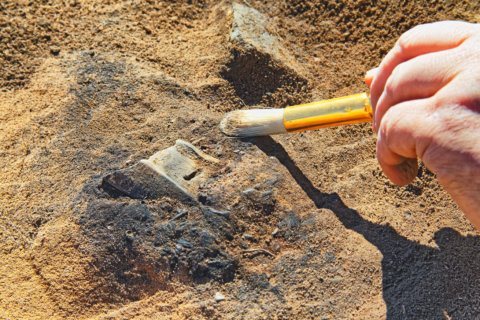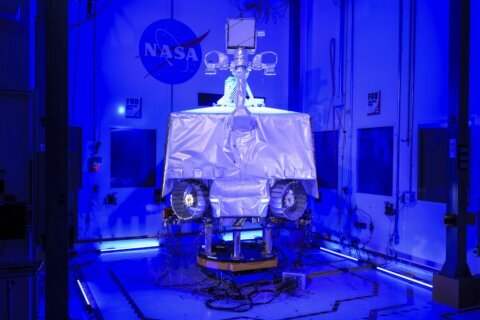
Two 31,000-year-old milk teeth have led to the discovery of an ancient group of people who once lived in northern Siberia — and, along with a 10,000-year-old skull, could offer a better understanding of who the ancestors of Native Americans were, scientists say.
In a study published in the journal Nature, an international team of evolutionary geneticists revealed the existence of a hardy, mobile group of hunters they termed the Ancient North Siberians. This group was not made up of direct ancestors of Native Americans, as the scientists initially anticipated.
They identified the lost group of people from DNA extracted from two tiny teeth belonging to two unrelated boys, found near the Yana River in Russia.
“These people were a significant part of human history,” study leader Eske Willerslev, a professor at the University of Cambridge and director of the University of Copenhagen’s Lundbeck Foundation Centre for GeoGenetics, said in a press release.
The researchers estimated that about 40 people lived at the Yana River site where the teeth were found, belonging to a larger population of 500 that hunted bison, woolly mammoths and woolly rhinoceroses. Laurent Excoffier, of the University of Bern, Switzerland, said in a press release that the Ancient North Siberians were “more closely related to Europeans than Asians and seem to have migrated all the way from Western Eurasia soon after the divergence between Europeans and Asians.”
Scientists largely agree that the ancestors of Native Americans arrived in the Americas from Siberia at least 14,600 years ago, near the end of the last Ice Age, crossing the Bering land bridge that is now below sea level.
While the Ancient North Siberians did not prove to be directly related to the ancestors of Native Americans, a 10,000-year-old skull, found near the Kolyma River in Siberia, offered a closer link. DNA from the skull indicated the individual was descended from a group related to the Ancient North Siberians, as well as from East Asians.
The individual represented a population the researchers named the Ancient Paleo-Siberians, and offered evidence of “the first major genetic shift” in the region. It is “the closest relative to the ancestral Native American population in northeastern Siberia that has been found to date,” the study authors wrote.
“This individual is the missing link of Native American ancestry,” Willerslev said.
First author Martin Sikora, of the Lundbeck Foundation Centre, explained: “These findings have changed a lot of what we thought we knew about the population history of north eastern Siberia but also what we know about the history of human migration as a whole.”
Anne Stone, a professor at Arizona State University’s School of Human Evolution and Social Change, told CNN: “We knew that the ancestors of Native Americans migrated into the Americas via the Bering land bridge but there has been debate about the number of migrations and their sources.”
Stone, who was not involved in the study, said the research demonstrated that “different contributions of different populations over time” ultimately formed the people who “migrate[d] into the Americas.”
Limited genetic data exists from the same time period, she said, adding: “Such data would help us understand the population dynamics better.”








